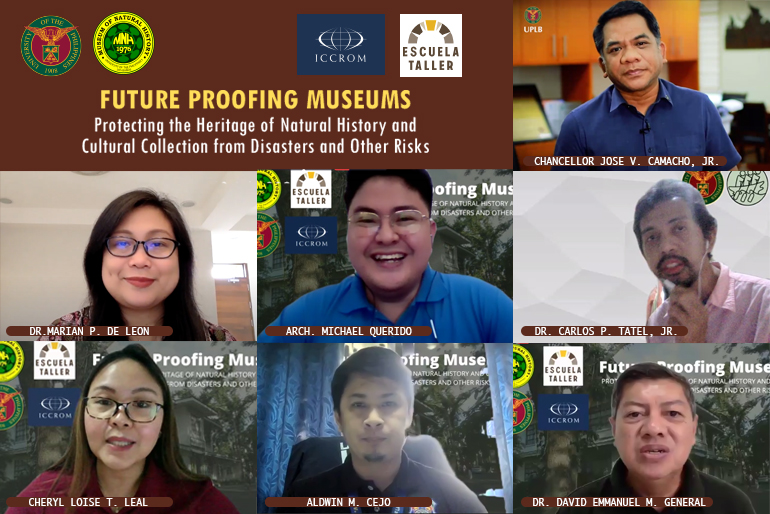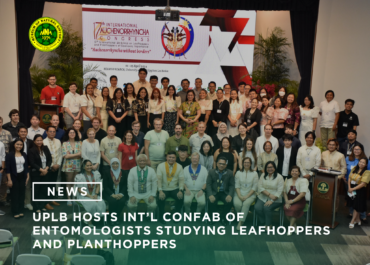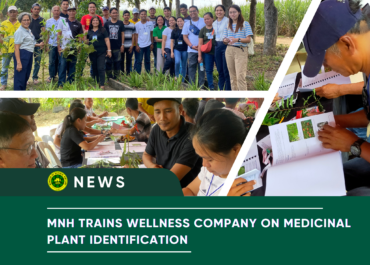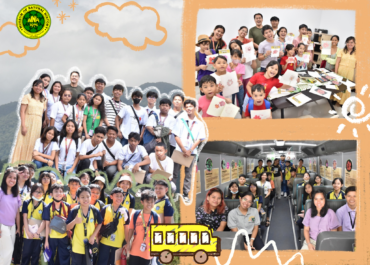
As the National Disaster Resiliency Month drew to a close on 30 July 2021, close to 100 people representing about 60 museums and collections, museum foundations, and disaster-risk reduction coordinating organizations converged together in an online webinar-workshop hosted by the UPLB Museum of Natural History.
Co-sponsored by the International Centre for the Study of the Preservation and Restoration of Cultural Property and the Escuela Taller de Filipinas Foundation, Inc., the whole day webinar emphasized the importance of disaster risk reduction and management (DRRM) among museums in the Philippines.
In his welcome remarks, UPLB Chancellor Jose V. Camacho expressed that the learning event is both responsive and refreshing.
“As we are all aware, there are various risks and disasters in our archipelago, especially now that we have entered the rainy typhoon season, hence we should all be prepared to respond to the dangers to precious museum collections.”
Finding a fresh take on the event, the Chancellor said that “it is not every day that we dedicate our time to pause and think on how to preserve our rich natural and cultural heritage.”
“By holding and being in this webinar, everyone of you is highlighting the importance of saving and protecting the pieces of artifacts and proofs of our rich biodiversity and culture,” the Chancellor stated.
During the opening of the program, Dr. Marian P. De Leon, Director of the UPLB Museum of Natural History said that as a stakeholders meeting, the webinar aims to put into proper perspective the impact of natural hazards on our priceless natural and cultural collections.
“We also hope that as a group later on we can propose science-based mitigation strategies and timely recovery responses for the museum sector as well,” the Director said.
Four speaker representatives from the cultural heritage conservation sector, academe, and national and provincial DRRM agencies took the spotlight during the morning session and discussed the nature of disaster risks and planning for them at the national and provincial levels.
For the first talk, Architect Michael Querido, Project Officer of the Escuela Taller de Filipinas Foundation Inc. discussed what is a disaster and its causes. According to him, disasters can be caused by risks natural events, human-induced catastrophe, and the slow progression of deterioration. He then gave several specific examples of effects of disasters to museums and architectural buildings in the Philippines.
“But risks or hazards – which may cause loss of life, injury, property damage – are not enough to really create a disaster because there is an aspect called vulnerability,” he said. As example, he gave exposure to geographical location, sensitivity of materials used, as well as mismanagement as vulnerabilities which complete the recipes for a disaster.
“Disaster is actually due to the combination of hazards, exposure, vulnerability which exceeds the coping capacity of a property,” he explained. “That is why preventive conservation is very important to heritage assets. Preventive conservation should be an ongoing procedure for all properties since it will be the most proactive way to protect properties such as built heritage.,” he explained.
Acknowledging that preventive conservation is but a small aspect of DRRM of cultural heritage, Arch. Querido highlighted that “we need to stop managing disasters and start managing disaster risks, and to do that, museums should have its own disaster risk reduction management plan.”
The next speaker, Dr. Carlos P. Tatel, Jr., Chair of the Department of Anthropology, UP Diliman discussed the need to understand what he terms as “actors” and how to contextualize them to properly manage disaster risk reduction.
According to Tatel, the challenge for planners is to balance physical science approaches with the understanding of people. “Disaster must be seen from the lens of science and society, as actors have roles to play in disaster risk mitigation and management,” he said.
“All actors, big or small, are important. Problems occur when some people think that the contributions of other actors are small compared to them,” Tatel emphasized. “If we understand people, we may be able to mitigate a lot of the disaster risks that we have,” he pointed out.
The third speaker, Cheryl Loise T. Leal, Acting Chief of the Policy Development and Planning Service-Disaster Risk Governance Division of the Office of the Civil Defense gave the highlights of the National DRRM Framework and Plan 2020-2030. She informed the participants that the government has updated the NDRP to reflect the changes in the commitments and directions of the country in order to address key result areas: disaster risk reduction, disaster preparedness and response and the concept of “Build Back Better.”
“Part of the reasons for updating the plan is that we have learned some lessons along the way, such as how to address the underlying causes of vulnerability and determining the links between environmental management to risk reduction and resilience-building,” she explained. We also saw lessons in terms of capacity-building, financing and monitoring and evaluation,” she added.
Specific to the agenda of the webinar, Ms. Leal said that among the many updates that NDRP has put in place is the importance to account for a country’s cultural heritage, value the damage to them due to disasters, and effect clear policy direction to rehabilitate them.
“Among many things that we are putting our resources into are the development of a monitoring and evaluation of the NRDP plan itself and pushing for the localization of DRRM efforts to make communities more resilient,” she added.
Mr. Aldwin M. Cejo, Officer-in-Charge, Laguna PDRRMO presented some highlights of the Laguna Provincial Disaster Risk Reduction and Management Plan and some of the activities that the provincial government is helping spearhead.
“We have a program to install and maintain early-warning systems with the assistance of the Korea Office for International Cooperation, as well as investments into building a command center,” Cejo reported.
Aside from these, the capitol has done hazard mapping and risk assessment of critical infrastructures in the province. Aside from conducting numerous disaster preparedness initiatives, the capitol is focusing on the enaction of policies and guidelines, especially the public service continuity plan, to govern different aspects of government, business, and education during and after disaster.
“Of course, we appeal for the assistance from all sectors of society, so that we can effectively conduct things like rapid damage assessment and needs analysis and post-disaster needs assessment,” he ended.
A short open forum, moderated by Dr. David Emmanuel M. General, University Researcher I of the Museum’s Entomological Collection, ensued after all the speakers presented their topics.
Search
Archives
Categories
- Announcement (21)
- Feature (21)
- News (141)
- Press Release (55)
- Research (4)
- Services (3)



